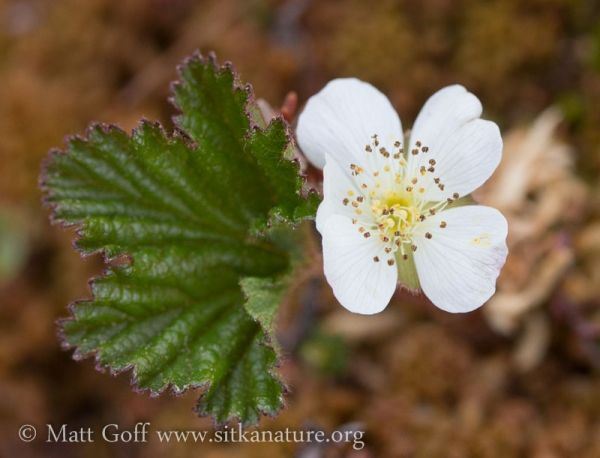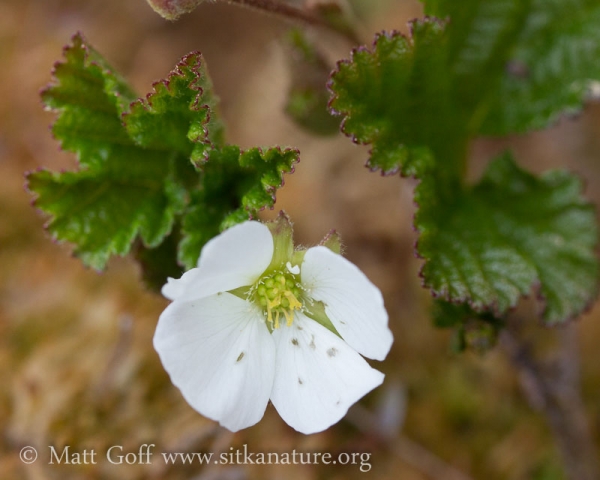Over the years, I’ve noticed that even though sometimes cloudberry (Rubus chamaemorus) plants are common in a muskeg, there might not always be any fruit. At some point along the way I learned that male and female flowers are on separate plants, and the reason some places had plants but no fruit is that all the plants were the same sex. It seems cloudberries can spread rhizomatously (basically via underground runners), so can do quite well in a given location without ever needing to make seeds for reproduction.
I do not remember ever really taking the time to differentiate the two types of flowers (though my older pictures of cloudberry flowers do include both, so maybe I did make an effort at least once before). While visiting a muskeg I have found fruit in before, I made an effort to find each. Most of what I noticed were male flowers (shown at top), but before I had to leave, I did find a few females as well (shown below). It’s not too hard to tell them apart as the males have a bunch of stamens (it looks like maybe two kinds?), and on the females I could see the bits that will grow into fruit (which I guess would be the ovaries).
Questions I now realize I don’t know the answers to (please feel free to add your own or answer these in the comments):
- Is it straightforward to transplant some of the missing sex plants to bogs that have cloudberry plants, but not fruit production?
- What’s the optimal ratio of male to female for fruit production?
- How hard is it to cultivate cloudberries (can I create a place for them to grow in my yard)?
- Does the male have two different kinds of stamens? If so, why? If not, what am I misunderstanding about what I’m seeing?

